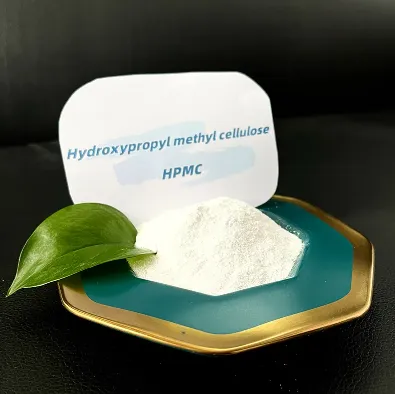
-

Gehitu: HeBei ShengShi HongBang Cellulose Technology CO.,LTD.
-

Posta elektronikoa
13180486930@163.com -

GUREKIN HARREMANETAN
+86 13180486930

HPMC in Enhancing Freeze-Thaw Resistance of Concrete
In the construction industry, particularly in regions with extreme weather conditions, freeze-thaw resistance is a critical consideration for ensuring the durability and longevity of concrete structures. Hydroxypropyl Methyl Cellulose (HPMC), a versatile material, has gained attention for its remarkable ability to improve the freeze-thaw resistance of concrete. This article explores how hidroxipropil metil zelulosa contributes to creating more durable concrete that can withstand the damaging effects of freezing and thawing cycles.

Hydroxypropyl Methyl Cellulose: A Key Component for Freeze-Thaw Resistance
When concrete is exposed to freeze-thaw cycles, water inside the concrete pores expands when it freezes and contracts when it thaws. This continuous process can cause cracking and degradation, leading to premature failure. Hydroxypropyl methyl cellulose acts as a critical additive in mitigating this issue. It significantly improves the workability of concrete and enhances its ability to resist damage caused by freeze-thaw conditions.
By incorporating hidroxipropil metil zelulosa into the concrete mix, it helps retain moisture in the mix during curing, ensuring proper hydration and reducing the formation of microcracks. Furthermore, the cellulose derivative enhances the overall density of the concrete, which helps reduce the permeability of water into the mix. As a result, hidroxipropil metil zelulosa contributes to a more stable concrete structure, reducing the risks of deterioration from freezing and thawing cycles.
The Science Behind Hydroxypropyl Methyl Cellulose and Concrete’s Durability
-ren propietate bereziak hidroxipropil metil zelulosa make it a key agent in improving the durability of concrete, particularly when subjected to freeze-thaw conditions. Hydroxypropyl methyl cellulose forms a gel-like substance when mixed with water, which helps retain moisture within the concrete. This increased moisture retention is crucial for hydration, as it ensures that the cement particles have the necessary water to bond properly, leading to a stronger and denser concrete matrix.
Gainera, hidroxipropil metil zelulosa can reduce the formation of capillary pores, which are pathways through which water can infiltrate the concrete. By minimizing these pores, the concrete becomes less susceptible to water ingress, which is one of the main causes of freeze-thaw damage. As a result, concrete with hidroxipropil metil zelulosa can better resist cracking and other forms of deterioration associated with freeze-thaw cycles, enhancing the overall longevity of the structure.
Hydroxypropyl Methyl Cellulose HPMC: Enhancing the Freeze-Thaw Performance of Concrete Mixes
In concrete mixes where hydroxypropyl methyl cellulose (HPMC) is used, the product provides several benefits that contribute directly to improved freeze-thaw performance. HPMC acts as a thickening and binding agent, which helps improve the cohesion between the components of the concrete mix. This cohesion is important when the concrete undergoes temperature fluctuations, as it prevents the formation of cracks that could expand with freezing and thawing.
Furthermore, HPMC reduces segregation and enhances the workability of the mix, making it easier to achieve a uniform, dense concrete structure. The increased density of the concrete, thanks to hidroxipropil metil zelulosa, helps reduce the absorption of water and other harmful agents that can weaken the material over time. This makes concrete treated with HPMC particularly valuable in environments where freeze-thaw damage is a common concern, such as in roads, bridges, and outdoor structures.
Hydroxypropyl Methyl Cellulose’s Contribution to Concrete Performance in Extreme Climates
Concrete subjected to extreme cold and fluctuating temperatures faces significant challenges, including the risk of cracking, spalling, and surface erosion. The inclusion of hydroxypropyl methyl cellulose (HPMC) in concrete helps enhance its performance in these harsh conditions. HPMC not only contributes to freeze-thaw resistance but also improves the overall strength and durability of the concrete.
In extreme climates, where concrete is regularly exposed to freezing temperatures followed by thawing, the integrity of the material is crucial. The high water retention properties of hidroxipropil metil zelulosa ensure that concrete maintains its strength even when subjected to cycles of freezing and thawing. Additionally, hidroxipropil metil zelulosa can prevent the formation of air pockets within the concrete, which can expand and cause cracking when frozen. This makes concrete with HPMC an ideal solution for environments prone to severe weather fluctuations.
The incorporation of hydroxypropyl methyl cellulose (HPMC) into concrete mixes plays a vital role in enhancing freeze-thaw resistance. By improving the workability, moisture retention, and overall cohesion of the mix, HPMC ensures that concrete can withstand the harsh effects of freeze-thaw cycles. Whether for residential buildings, infrastructure projects, or outdoor structures, hidroxipropil metil zelulosa is an essential additive for creating durable, long-lasting concrete.
For those looking to enhance the durability of their concrete and prevent freeze-thaw damage, choosing hidroxipropil metil zelulosa is a wise decision. Visit our website to explore our range of high-quality HPMC products and improve the performance of your concrete mixes today.
-
Ethyl Cellulose Powder as a Pharmaceutical BinderBerriakJul.10,2025
-
Blending Fibre Natural and Synthetic for PerformanceBerriakJul.10,2025
-
Starch Ether For Construction: The Advanced Mortar Additive RevolutionBerriakJul.10,2025
-
MHEC Cellulose in Cement-Based Renders and PlastersBerriakJul.10,2025
-
Micronized Rubber Powder Dispersion TechniquesBerriakJul.10,2025
-
Impact of Cream of Tartar Plaster Retarder on Final StrengthBerriakJul.10,2025
-
Rubber Powder Durability in ConstructionBerriakJun.26,2025











